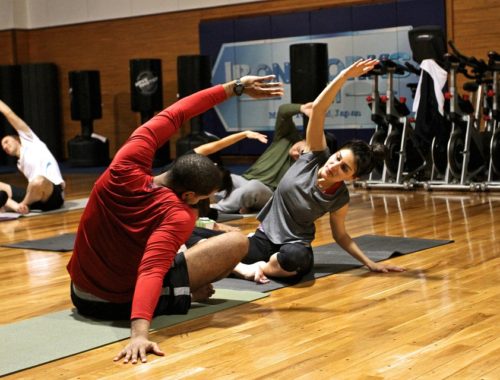Boost
What Exercise Can Do for Cancer Patients

Cancer and the intensity of cancer treatment can tax a heavy physical toll on patients inducing extreme fatigue. Consequentially, cancer patients are at a high risk for cachexia, or muscle wasting syndrome. The syndrome is characterized by a severe loss of skeletal muscle mass and substantial weight loss due to the body’s excessive breakdown of skeletal muscle tissue and fat. Patients with cachexia are typically so frail and weak that even walking can prove to be a difficult task. Approximately ⅓ of cancer deaths can be attributed to cachexia.

How exercise specifically helps improve cancer patients’ condition
To combat cachexia, physical exercise is now frequently being integrated into cancer patients’ routines. Recent evidence, moreover, shows that benefits of exercise can reach beyond preventing muscle wasting. Exercise improves not only the physical but also mental well being of patients by combating the deterioration that often occurs during anticancer treatment. A study conducted in 2016 of more than 1.4 million individuals across the US and Europe revealed that people could reduce cancer risk with moderate to strenuous physical activity. Additionally, 700 exercise intervention trials involving more than 50,000 cancer patients demonstrated reduced toxicity of treatment, inhibited disease progression, and enhanced survival. Numerous animal studies conducted over the last few decades suggest a casual link: exercise leads to a reduction in tumor incidence and growth rates as well as metastatic potential. The direct mechanism of how exercise helps fight cancer, however, remains a bit of a mystery. Studies have suggested several plausible theories as to how exercise can have a multitude of direct, positive effects on cancer.
One theory is that exercise induces the release of a group of proteins known as myokines. Myokines are produced and released by muscle cells, and several are released only during exercise. In cell cultures, a select few affected cancer cell proliferation and slowed tumor growth. Interleukin-6, a well-characterized and studied myokine, is increasingly secreted during exercise. It has been shown to direct NK cells to tumor sites in mice which in turn cause tumor regression. There are approximately 20 known exercise myokines and knowledge regarding their anticancer effects continues to grow with further research.
Another theory is that exercise can induce an increased levels of stress hormones epinephrine and norepinephrine. These hormones that can act directly on tumors and stimulate natural killer cells (a type of immune cell) to enter the bloodstream. A study showed that when breast cancer cells were injected into mice who had just exercised, the mice showed reduced tumor formation. In another experiment, when the pathway through which epinephrine and norepinephrine work was blocked in the mice, the suppression of tumor growth was blunted, which suggests that epinephrine and norepinephrine are responsible for the results observed.

Even though much remains to be explored regarding physical exercise’s influence on cancer, an overwhelming amount of evidence suggests that exercise training is a beneficial, safe, and feasible option to improve cancer patients’ physical and mental health. Being active may inhibit the progression of the disease as well as drastically improve prognosis.
– Alexander Kirichenko, MD PhD




